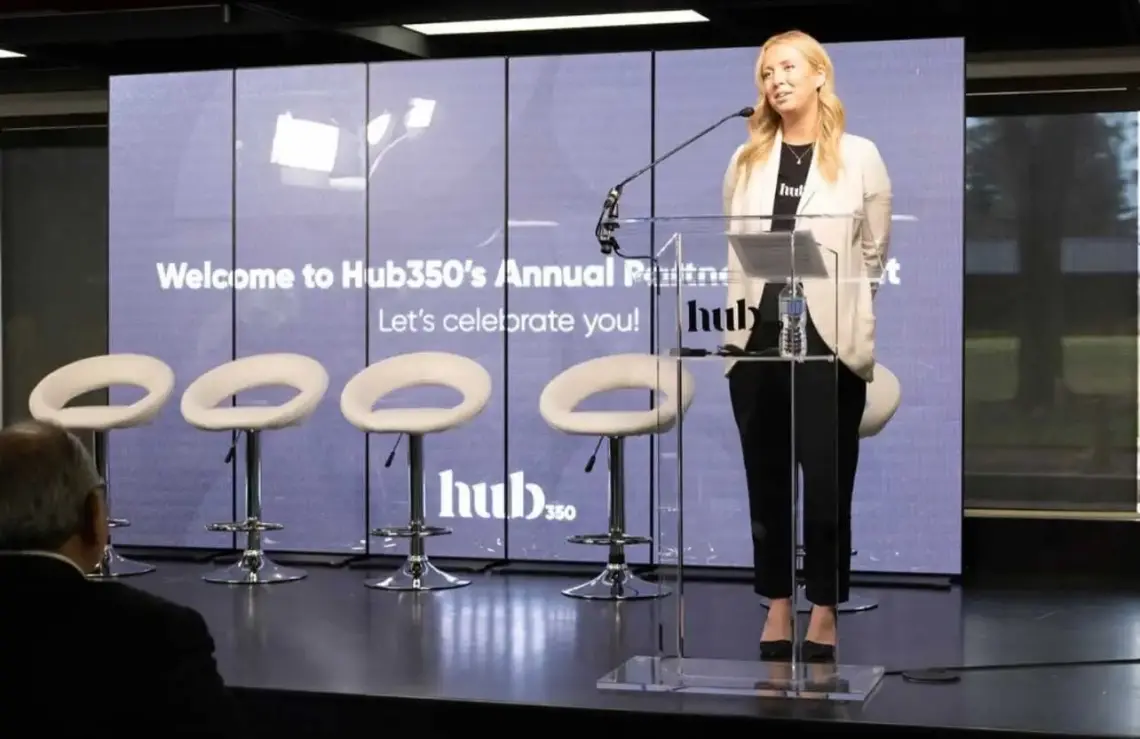
Key partnerships, innovation and breaking down silos were the focus of the recent Kanata North Business Association Hub350 Partner Summit.
Attendees from a wide range of sectors gathered at the Hub to celebrate the one-year anniversary of HUb350’s opening, as well as to hear about plans for the future.
Guests heard about Nokia’s growth plans for Kanata North, Telus’ views on 5G and how it’s driving innovation in Kanata, and witnessed demos from Telus and L-Spark’s Living Lab Accelerator program.
On one panel, representatives from Carleton University, uOttawa, Algonquin College and Queens University spoke to the importance of an academic and industrial collaboration in Kanata North.
A key aspect of a partnership with Algonquin College is the focus on applied research, said Kristine Dawson, associate vice-president, Experiential Learning and Innovation at Algonquin College.
“We’re not necessarily doing theoretical fundamental research, but it’s always around the commercialization or optimization of our work with a partner. And what’s important is that the intellectual property remains with the business partner who’s working with us. I really think that that’s a unique advantage and opportunity if you want to come and partner and work with that.”
Rafik Goubran, vice-president research and international at Carleton University spoke to the broad range of programs related to the work in the tech park, and said that more than 80 students in undergraduate and graduate programs are working at the Kanata site. Carleton has a single point of contact, but a focus is on three pillars: research, talent development and community engagement.
“It’s a win-win because now the students will be able to have experiential learning and be ready for the market. But at the same time this would be an opportunity for you to work with the students on the long run and that could lead to career options and coop and internships,” Goubran said.
Guy Levesque, associate vice-president, Research Support and Infrastructure at uOttawa said that when he joined the university, he was asked by his vice-president, research and innovation, to set up the Kanata North campus.
“We’ve had others, but this is the first real innovation super cluster in the country. We were convinced that having a presence in the tech park was critical to the success of the tech park, critical to the success of the university and critical to the success of our students,” he said.
Since then, uOttawa’s Co-op program has grown leaps and bounds, he explained. The program now has more than 400 students in it, up from 280 in its original year.
“That only happens because we understand the needs, we translate those needs. And in our roles as innovation, partnerships, entrepreneurship champions, we have to break a few eggs back at the university to change and adapt some of our ways of thinking and programs to fit the realities of the world in which we live in and operate in. And it’s transformed the university’s culture,” Levesque said.
Queens University has actually been involved in innovation and partnerships in the auto area since at least 2014, said Jim Banting, assistant vice-principal of Partnerships and Innovation at Queen’s University.
“If you’re going to be a Hollywood actor or actress, you go to Hollywood because that’s where all the activity is. Well, if you want to work in deep tech, you’ve got to come here because this is where the activity is,” he said.
“Proximity and having collisions and reducing friction are important in the way universities are trying to reach out to industry partners to be working with.
He added that Queens is working to better prepare students and faculty members to interact with industry, and starting that dialogue to understand what industry challenges are so that it might inform future research programs and not with expertise.
Panelists agreed that academic partnerships can also be a successful way to bring students into the workforce.
“By the end of an opportunity, you’ve had maybe a two-to-three year-long interview with a student, and you know you’ve got the right fit for your organization at that point,” Banting said.
